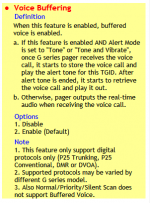I’ve noticed the audio coming from a SDS100/200 and a BCD325P2 are slightly out of sync when receiving the same transmissions and when I inquired as to why this happens I was told the SDS series scanners are software defined radios (SDR) and the BCD325P2 is not. From that I took it to mean SDR is how Uniden combats simulcast issues… but…
I just purchased a Unication G5 pager/scanner and noticed no slight delay when receiving the same transmissions regardless of what mode the G5 is receiving when compared to the G5. (Currently the G5 is programmed with analogue conventional and digital P2 trunked.) Both the SDS series and the G5 are hearing everything without any difference-both are in sync.
Initially I was under the impression the SDS series incorporated SDR as a way to combat simulcast issues. But another explanation as to how the SDS series combats simulcast issues was by using filters, software defining has nothing to do with correcting the simulcast issues… instead, it was the filters that did this. Could it be Uniden found it necessary to use SDR in order to include the filters? …where a statement that says SDR was incorporated to combat simulcast issues is partially correct? …that it does allow for simulcast corrections? Because without it filters would not be available? Clarification on this would be helpful. Because the G5 handles simulcast issues and it’s not a SDR.
I just purchased a Unication G5 pager/scanner and noticed no slight delay when receiving the same transmissions regardless of what mode the G5 is receiving when compared to the G5. (Currently the G5 is programmed with analogue conventional and digital P2 trunked.) Both the SDS series and the G5 are hearing everything without any difference-both are in sync.
Initially I was under the impression the SDS series incorporated SDR as a way to combat simulcast issues. But another explanation as to how the SDS series combats simulcast issues was by using filters, software defining has nothing to do with correcting the simulcast issues… instead, it was the filters that did this. Could it be Uniden found it necessary to use SDR in order to include the filters? …where a statement that says SDR was incorporated to combat simulcast issues is partially correct? …that it does allow for simulcast corrections? Because without it filters would not be available? Clarification on this would be helpful. Because the G5 handles simulcast issues and it’s not a SDR.


